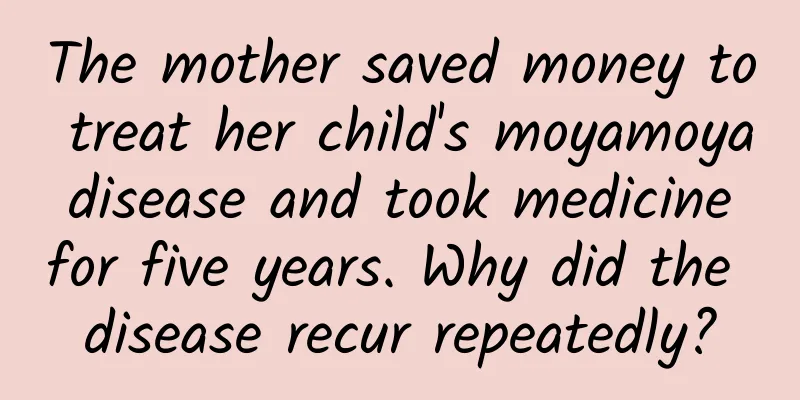The mother saved money to treat her child's moyamoya disease and took medicine for five years. Why did the disease recur repeatedly?

|
In the outpatient clinic, a mother brought her girl to see a doctor. The patient is 8 years old. When she was 3 years old, she developed symptoms of right hemiplegia, which lasted no longer than 4 hours. She underwent an MRI at a local hospital and was diagnosed with moyamoya disease, which she has been taking medication for. This year, the patient developed involuntary movements of her right upper and lower limbs, which seriously affected her life and study. The local hospital recommended that the patient go to a higher-level hospital for further examination and treatment. When the patient's family came, they were full of doubts and kept asking why the medicine didn't work, and whether the body had developed drug resistance. Should the medicine be changed for treatment? The patient's condition is not that the medication is ineffective or that the body has developed drug resistance. The fundamental problem is that conservative drug treatment is ineffective for patients with moyamoya disease. No matter what kind of medication the patient changes or how long he takes, the condition cannot be controlled. Due to some special reasons, patients with moyamoya disease gradually have occlusion of the large arteries in the brain, and small compensatory blood vessels are formed around them. When the growth rate of the small compensatory blood vessels is slower than the occlusion rate of the large blood vessels, cerebral infarction is prone to occur. The small compensatory blood vessels are fragile and prone to rupture and bleed. Some patients with moyamoya disease also have cerebral aneurysms, which can easily cause cerebral hemorrhage when ruptured. Drug treatment can only relieve symptoms, but cannot prevent the occlusion of large blood vessels in the brain, nor can it prevent the occurrence of cerebral hemorrhage. Therefore, conservative drug treatment is ineffective for patients. The current effective method for treating moyamoya disease is surgical treatment. There are three types of surgical methods: direct vascular reconstruction, indirect vascular reconstruction and combined vascular bypass surgery. Among them, the most commonly used surgical method is combined vascular bypass surgery. This surgical method not only alleviates the patient's cerebral blood supply insufficiency, but also builds a new blood supply channel for the patient, reduces the risk of stroke in the patient, and improves the patient's life. Therefore, it is recommended that patients with moyamoya disease undergo surgery as soon as possible after being diagnosed with moyamoya disease to reduce the risk of the disease. If you have any questions about cerebrovascular disease, moyamoya disease, carotid artery stenosis, etc., you can leave a private message for consultation. I will reply to you in my spare time. |
<<: Why does a rainbow appear after rain? How is a rainbow formed?
>>: Is eating vegetables raw the healthiest? There are many ways to lock in VC
Recommend
Pain on the left side of lower abdomen during menstruation
The main reason for the pain on the left side of ...
I am three months pregnant and have some spotting
If you have some spotting in three months of preg...
How to store leftover bayberries? How long can they be kept in the refrigerator?
Bayberry tastes sweet and sour, rich in glucose, f...
Janrain: Social login has many benefits
According to a Janrain study published in January...
What is the treatment for breast cancer?
There are many treatments for breast cancer, the ...
Bleeding after menopause
Vaginal bleeding after menopause should be taken ...
How serious is the impact on the body of a person’s confusion about things?
People's thinking is often affected by the en...
Can you get infected with influenza B after influenza A? Actually, there is no need for "after", and the person who infected you is still treating you...
Recently there is a topic called #Can influenza A...
What is the role and function of magnets? Is it normal for stainless steel to attract magnets?
Magnets can be divided into "permanent magne...
How much does artificial insemination cost?
Some young people today do not want to get marrie...
Why do snail noodles need to be cooked twice? What is the secret to delicious snail noodles?
The soup of snail noodles is made of snails, gala...
What will happen to your body if you drink a cup of soy milk every day? Don't drink one of these, it will cause poisoning!
Soy milk is a popular healthy drink and is also k...
What causes female breast cysts?
Nowadays, many women suffer from breast diseases....
Can pregnant women eat Nepeta?
Schizonepeta, which can also be called fragrant s...
Treatment of loose stools in pregnant women starts with intestinal treatment
What is the matter with pregnant women having loo...









